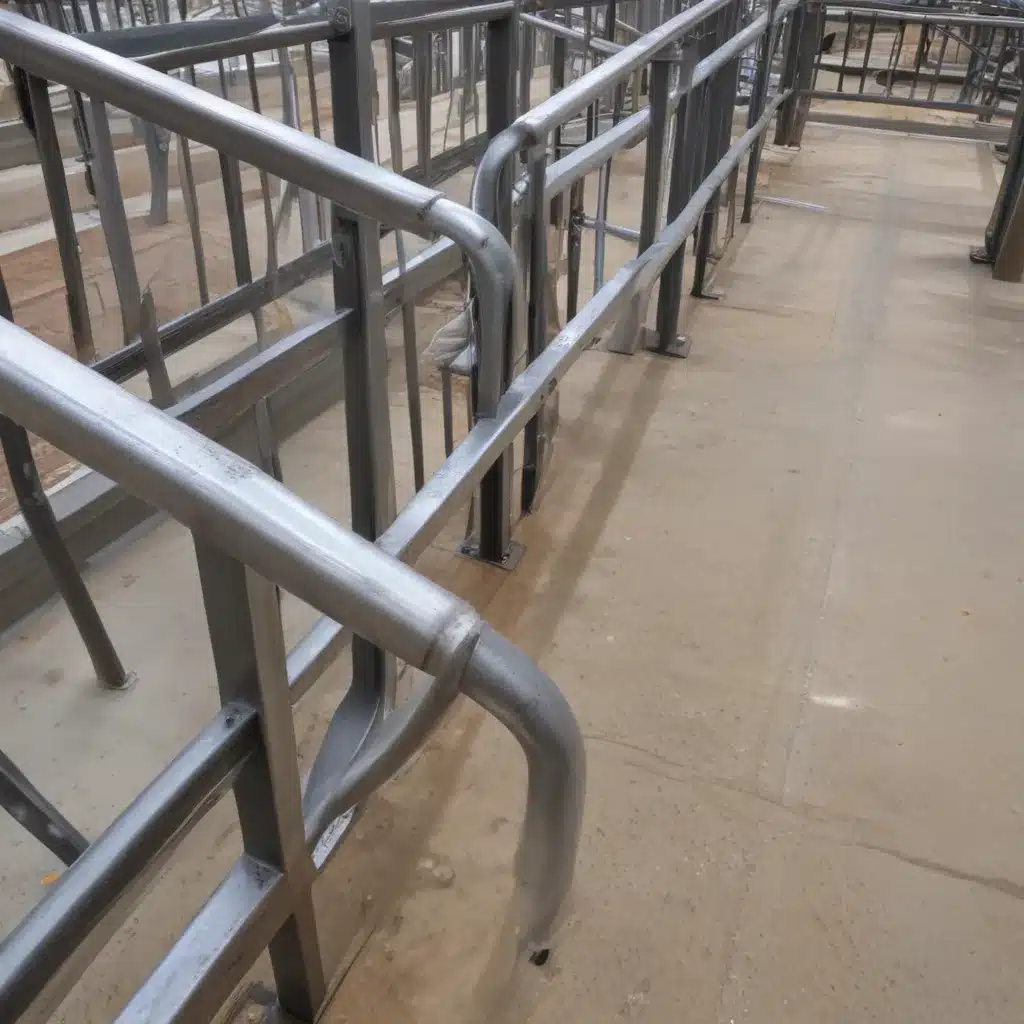
Unraveling the Complexity of Railing Welds
As a seasoned welding professional, I’ve seen my fair share of challenges when it comes to achieving code-compliant railing welds. The world of welding can be a labyrinth of regulations, specifications, and technical jargon, but fear not – I’m here to guide you through the maze and help you understand the nuances of crafting railing welds that not only meet the required standards but also stand the test of time.
Let’s dive in, shall we? Imagine you’re a homeowner or a contractor tasked with installing a sturdy, safe railing system. You might be thinking, “How hard can it be? Weld a few pieces of metal together, and voila!” Well, my friend, that’s where you’d be mistaken. Railing welds are not your average welding project – they require a careful consideration of factors like structural integrity, safety, and, most importantly, code compliance.
Navigating the Code Jungle
The first step in achieving code-compliant railing welds is understanding the relevant codes and standards. Depending on your location, you might be subject to a myriad of regulations, from the International Building Code (IBC) to the American Welding Society (AWS) standards. These codes and standards outline the specific requirements for railing height, spacing, load-bearing capacity, and more. Familiarizing yourself with these guidelines is crucial, as ignoring them can lead to costly rework, safety hazards, and even legal complications.
One of the key factors to consider is the weld type. Depending on the railing design and the applicable codes, you might need to use a specific welding process, such as shielded metal arc welding (SMAW), gas metal arc welding (GMAW), or flux-cored arc welding (FCAW). Each of these processes has its own unique characteristics, advantages, and limitations, and choosing the right one can make all the difference in achieving a code-compliant weld.
Mastering the Techniques
Now that you’ve got the codes and standards under your belt, it’s time to dive into the practical aspects of railing welding. One of the most critical elements is proper joint preparation. Ensuring that the surfaces to be welded are clean, free of defects, and properly aligned is crucial for a strong, uniform weld. Neglecting this step can lead to weld defects, such as lack of fusion or porosity, which can compromise the structural integrity of the railing.
Another key consideration is the welding position. Railing welds often need to be performed in various positions, from flat to overhead, and each position presents its own set of challenges. Mastering the techniques for these different positions, such as using the appropriate electrode angles, travel speeds, and weld bead patterns, is essential for achieving consistent, high-quality welds.
But the real magic happens in the realm of weld quality control. As a welding professional, I can’t stress enough the importance of implementing a robust quality assurance program. This involves regular visual inspections, non-destructive testing (NDT) techniques, and careful documentation of the welding process. By staying on top of quality control, you can ensure that your railing welds not only meet the code requirements but also provide the safety and longevity your customers expect.
Overcoming Unique Challenges
Of course, no welding project is without its unique challenges, and railing welds are no exception. One common issue I’ve encountered is dealing with dissimilar metals, such as when connecting stainless steel railings to carbon steel posts. The potential for galvanic corrosion in these scenarios requires specialized techniques, like the use of dissimilar metal filler materials or the implementation of protective coatings.
Another challenge that often arises is the need for aesthetically pleasing welds. Railing systems are not just functional – they’re also a visual element that can enhance the overall design of a space. Mastering the art of “weld cosmetics,” such as controlling weld bead appearance, minimizing discoloration, and creating smooth transitions, can be the difference between a job well done and a less-than-satisfactory outcome.
Embracing the Evolving Landscape
As with any industry, the world of welding is constantly evolving, and railing welds are no exception. New materials, technologies, and code updates can present both opportunities and challenges for welding professionals. Staying up-to-date with the latest advancements and best practices is crucial for maintaining a competitive edge and delivering exceptional results for your clients.
One exciting development in the world of railing welds is the growing use of automated welding systems. These advanced technologies can help enhance the consistency and quality of welds, while also improving efficiency and reducing the risk of human error. As a welding expert, I’m always eager to explore the potential of these innovative solutions and incorporate them into my workflow.
Fostering a Culture of Continuous Improvement
At the end of the day, achieving code-compliant railing welds is not just about mastering the technical aspects – it’s also about cultivating a culture of continuous improvement within your organization. This means fostering an environment where learning, innovation, and a relentless pursuit of excellence are the norm.
By encouraging ongoing training, investing in the latest welding equipment and technologies, and continuously reviewing and refining our processes, we can stay ahead of the curve and deliver world-class railing welds that exceed our clients’ expectations. After all, isn’t that what being a true welding professional is all about?
So, there you have it, my friends – a deep dive into the world of code-compliant railing welds. From navigating the jungle of codes and standards to mastering the intricate techniques, this is a journey that requires dedication, expertise, and a genuine passion for the craft. But trust me, when you see the final product – a sturdy, safe, and beautifully crafted railing system – it’s all worth it.
If you’re interested in learning more about our precision welding services, be sure to check out https://www.corrconnect.org/. We’re always here to lend a helping hand and guide you through the welding challenges you may face.
